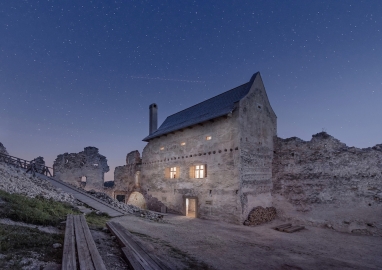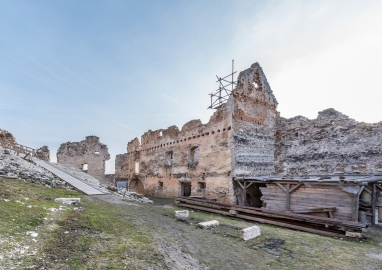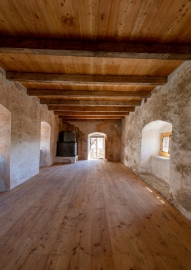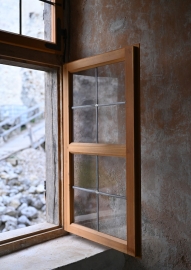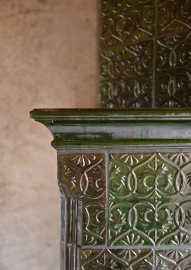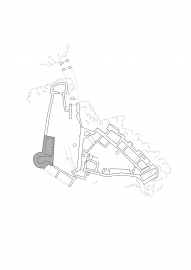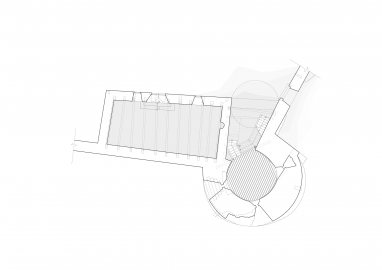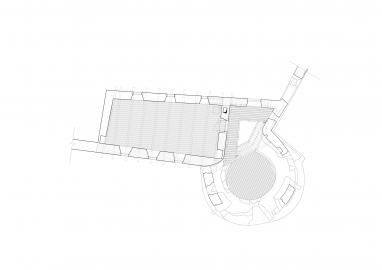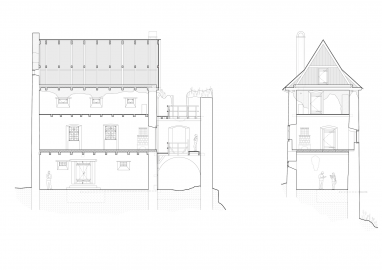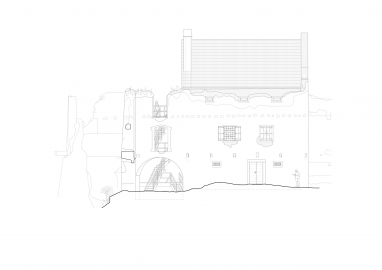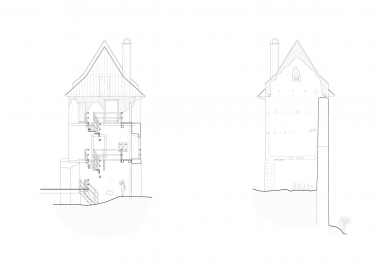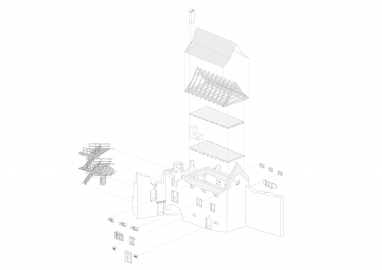Uhrovec Castle – Operation building
The comprehensive restoration of the operation building at Uhrovec Castle is a revolutionary step in restoring the gabled roof to the environment of the ruin in the Central European context. By using traditional materials and construction and craft methods, it sets the bar for further restoration of monuments in the entire region.
Uhrovec Castle, located high in the Strážovské vrchy and hidden off all trade routes, one of the best-preserved castle ruin in Slovakia. The renovation of the late renaissance operational building in the lower courtyard of the castle is a milestone in its further renovation and at the same time sets new criteria for monumental restoration in our region. The three-story building with a mixed function serves as an exhibition space with a common room and accommodation facilities for visitors, as well as people involved in further systematic renovation. Traditional building materials, classic craftsmanship and many details that seemed to be lost bring life back to the abandoned complex.
Uhrovec castle was built around 1241. Thanks to the inaccessible terrain, it served as a refuge and a "vault" for the valuables of the nobility. In July 1848 was destroyed by fire and the castle became a ruin. The operation building was the last functional building of the castle.
The basis of the preparation and project work was a precise survey focused on the complex identification of the building's historical values. The evaluation of the results took place in interdisciplinary teams of heritage experts, researchers, architects and suppliers of professional and restoration work. Emphasis was focused primarily on the exact identification of the original structures, materials and construction methods. Thanks to many preserved period details, marks and finds, it was possible to transform the ruin into a functional building again.
The restoration of the castle represents social direction towards the values of the European cultural heritage. An exemplary element of project implementation is its participatory nature, when teams of volunteers and professionals who were diverse in terms of status, culture and education worked together during the whole process.
During the construction process, many traditional craft techniques were applied.
The bearing walls were rehabilitated and the missing parts of the brickwork were completed. All horizontal load-bearing structures are made of hand-trimmed timber beams installed in the original beds.
The shape of the wooden shingle roof is derived from the imprint on the northern gable wall. The floor in the attic is made of ceramic tiles, which protects the lower floors from possible fire.
The windows are derived from finds in the upper castle. Heavy oak frames are fitted with light pine wood wings. The glazing is made of hand-cast glass and light that passes through these "imperfect" and crooked glasses creates unique atmosphere.
The tiled stove in the interior on the 2nd floor was made based on the discovery of the original shard.
The original preserved plasters were supplemented with lime hand plaster.
The specific task was the connection of the individual levels of the three-story building. Original exterior boarding will not make sense only in fragmentory restoration, so new wooden staircase is placed in the mass of the adjacent building of the cannon bastion.

